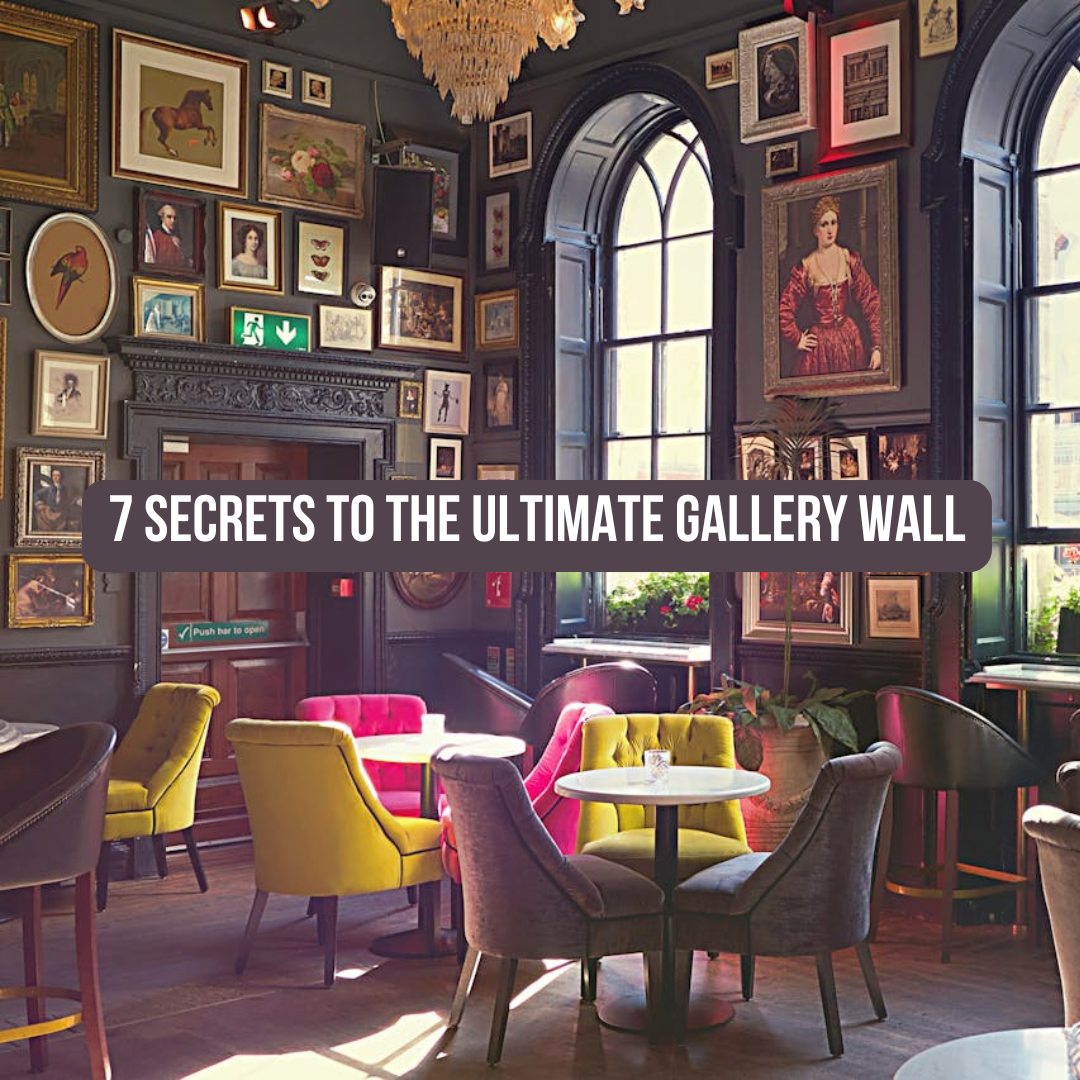Article: The Ultimate Guide to Picture Lighting & Gallery Walls: 7 Secrets for Gallery Wall Success

The Ultimate Guide to Picture Lighting & Gallery Walls: 7 Secrets for Gallery Wall Success
Creating Impact: 7 Secrets to Make Your Gallery Wall Command Attention
Have you ever walked into a friend's home and not even noticed the beautiful wall of family photos, cool momentos, or maybe even their beautiful art collection right away because it was barely visible in the shadows of their living room or hallway? It's not unusual for our customers to invest in stunning pieces, carefully chosen frames, and even used a laser level to hang everything perfectly. But then they forget to do the one thing that would have made everything come together and be seen. Their gallery wall felt flat, lifeless.
That's when I learned one of the most valuable lessons in my design career: even the most carefully curated collection needs the right presentation to truly shine.
After years of helping to create gallery walls for both residential and commercial spaces, I've developed these seven essential strategies that can transform any collection from good to extraordinary. Let me share what really works.
1. Tell a Story with Thoughtful Groupings
Here at Brass Black we are The Storytellers of Lighting, so it makes sense that our first piece of advice is to make sure you tell a story with your gallery wall. Move beyond random placement and create intentional groupings that reflect a theme or narrative that you want the world, or at least your guests, to know. Designers treat gallery walls as visual stories, curating each piece to contribute to the overall tale. So should you.
-
Establish a Theme: Choose a unifying element like a color palette, subject, or artistic style.
-
Mix Mediums: Blend photography, paintings, and prints for variety.
-
Maintain Consistent Spacing: Leave 2-3 inches between pieces for balance without crowding.

2. Hang with Precision
The height and alignment of your gallery wall can make or break its impact. Be sure that you are like Goldilocks and that you nothing is "too high nor too low". Proper placement ensures harmony with the room’s design and functionality. And as you add more pieces later you can always make it higher or lower with those pieces.
-
Center the Display: Keep the midpoint of the arrangement at 57-60 inches from the floor.
-
Above Furniture: Leave 8-12 inches of space between the lowest piece and furniture.
-
Consider Sightlines: Adjust placement for optimal viewing angles and traffic flow.
3. Light It Like a Pro
Lighting transforms a good gallery wall into an extraordinary one. Proper lighting adds depth and highlights the artistry of your collection.
-
Layer Lighting: Combine ambient lighting with focused picture lights or sconces.
-
Use Adjustable Fixtures: Ensure flexibility as your collection evolves.
-
Highlight Key Pieces: Install dedicated lighting for standout works to draw attention.
*A bit of self-promotion here! While plugin picture lights or battery operated picture lights can have their usefulness at times, there really isn't anything that beats hard-wired picture lighting. And you can find our hardwired lights HERE on our site.
4. Balance Scale and Proportion
A well-balanced gallery wall features thoughtful attention to size relationships among pieces and with surrounding furniture. Think of your gallery wall like a great conversation - you need a strong opening line. I always tell my clients to begin with their most impactful piece. Maybe it's that oversized black and white photograph of your whole family. Or maybe it's that painting you fell in love with in Paris, or the colorful abstract that makes you smile every morning. Position this piece slightly off-center at eye level (about 60 inches from the floor), then build around it. This creates a natural focal point and gives your eye somewhere to land first.
-
Anchor with Larger Pieces: Start with a bold piece and build outward with smaller items.
-
Mix Sizes: Combine different dimensions to create visual interest.
-
Leave Breathing Room: Allow enough space around each piece for a clean, uncluttered look.
5. Embrace Asymmetry for Interest
Symmetry feels formal, but asymmetry adds energy and creativity to your gallery wall. Here's a secret that took me years to perfect: forget about perfect symmetry. The most engaging gallery walls actually embrace a bit of beautiful chaos. Instead of matching pieces to make sure everything is exactly perfect, think about visual weight.
-
Cluster Smaller Pieces: Balance a large piece with a grouping of smaller ones.
-
Mix Orientations: Include both vertical and horizontal works.
-
Use Negative Space: Leave some blank areas to let the design breathe. Resist the urge to overcrowd what you're displaying. Your art needs a little "room to breathe".
- Be A Little Chaotic!
6. Choose Frames with Purpose
Frames are more than functional—they’re design elements that contribute to the gallery’s overall aesthetic. Here's the trick: maintain at least one consistent element throughout. Maybe all your frames are gold, or perhaps you stick to a specific color palette. This approach gives you freedom while ensuring the wall still feels cohesive. But note that I'm not saying that you should use the same frame color. In fact, if all of your display is the same type of art or the same style of photos then you may want to differentiate there by specifically using different frames styles or even frame colors.
-
Coordinate Frames: Select frames that complement your art and room decor.
-
Experiment with Styles: Mix frame types, but maintain cohesion through color or material.
-
Use Mats Creatively: Wide or colorful mats can add drama and focus to smaller works.
7. Combine Styles and Mediums
The most dynamic gallery walls blend different styles, textures, and mediums for a layered, curated look. The most interesting walls I've seen designed usually combine different types of art. There are paintings, photographs, mirrors, prints, and I've even seen three-dimensional pieces thrown in on a ledge.
-
Blend Eras and Techniques: Pair modern art with vintage finds.
-
Add Sculptural Elements: Include 3D items like shadowboxes or small shelves.
-
Reflect Your Personality: Showcase a mix of personal mementos, family photos, and professional pieces to make the wall uniquely yours.
Here's a bonus, and one of my favorite pieces of advice: don't feel pressured to finish your gallery wall in one day. The most authentic collections grow over time. Start with your core pieces and great lighting, then add as you find art that speaks to you. Some of my favorite walls started with just three pieces and grew into stunning collections over months or years.
Final Thoughts
Remember, creating a gallery wall is like telling your story through art. Take your time, trust your instincts, and don't be afraid to adjust as you go. And please, don't leave your beautiful pieces in the dark - they deserve to be seen in their best light.
By following these seven designer secrets, you can create a gallery wall that not only enhances your space but also serves as a stunning focal point. Remember, the magic lies in the details—and in letting your personal story shine through.

